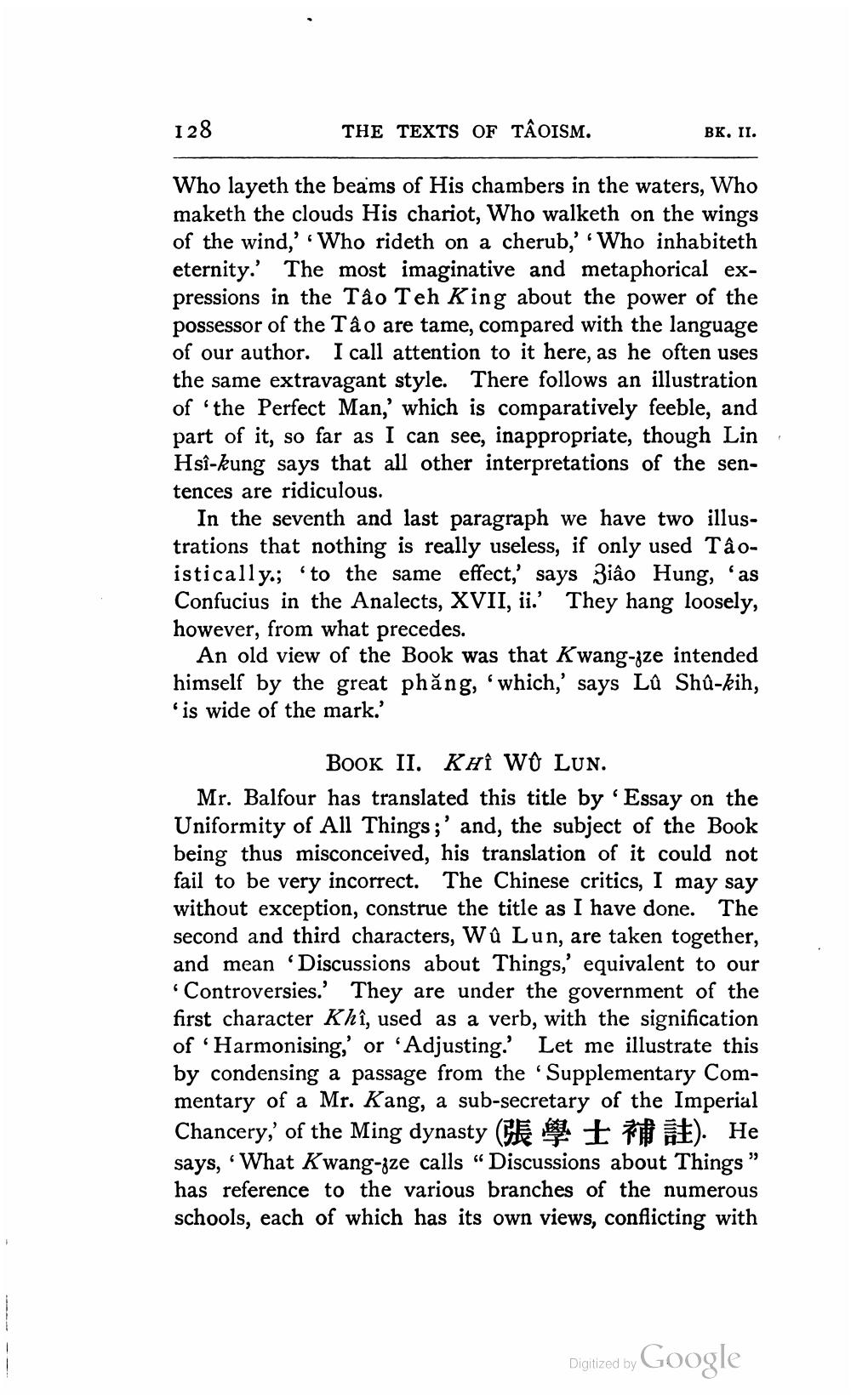________________
128
THE TEXTS OF TAOISM.
Who layeth the beams of His chambers in the waters, Who maketh the clouds His chariot, Who walketh on the wings of the wind,' 'Who rideth on a cherub,' 'Who inhabiteth eternity.' The most imaginative and metaphorical expressions in the Tâo Teh King about the power of the possessor of the Tâo are tame, compared with the language of our author. I call attention to it here, as he often uses the same extravagant style. There follows an illustration of 'the Perfect Man,' which is comparatively feeble, and part of it, so far as I can see, inappropriate, though Lin Hsi-kung says that all other interpretations of the sentences are ridiculous.
BK. II.
In the seventh and last paragraph we have two illustrations that nothing is really useless, if only used Tâoistically; to the same effect,' says 3iâo Hung, 'as Confucius in the Analects, XVII, ii.' They hang loosely, however, from what precedes.
An old view of the Book was that Kwang-ze intended himself by the great phăng, 'which,' says Lû Shû-kih, 'is wide of the mark.'
Book II. KHI WÔ LUN.
Mr. Balfour has translated this title by 'Essay on the Uniformity of All Things;' and, the subject of the Book being thus misconceived, his translation of it could not fail to be very incorrect. The Chinese critics, I may say without exception, construe the title as I have done. The second and third characters, Wû Lun, are taken together, and mean 'Discussions about Things,' equivalent to our 'Controversies.' They are under the government of the first character Khî, used as a verb, with the signification of 'Harmonising,' or 'Adjusting.' Let me illustrate this by condensing a passage from the 'Supplementary Commentary of a Mr. Kang, a sub-secretary of the Imperial Chancery,' of the Ming dynasty (). He says, 'What Kwang-zze calls "Discussions about Things " has reference to the various branches of the numerous schools, each of which has its own views, conflicting with
Digitized by Google




